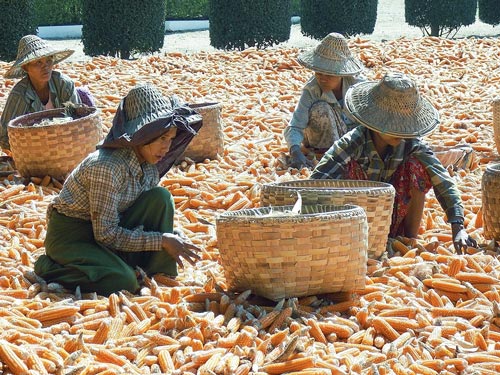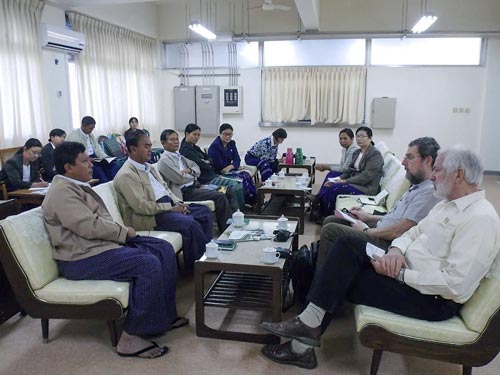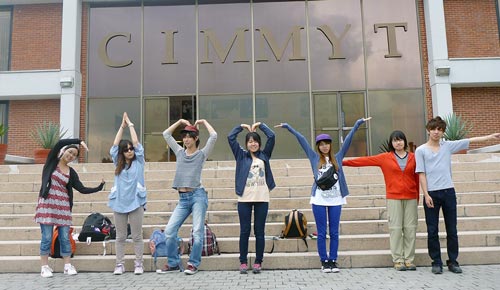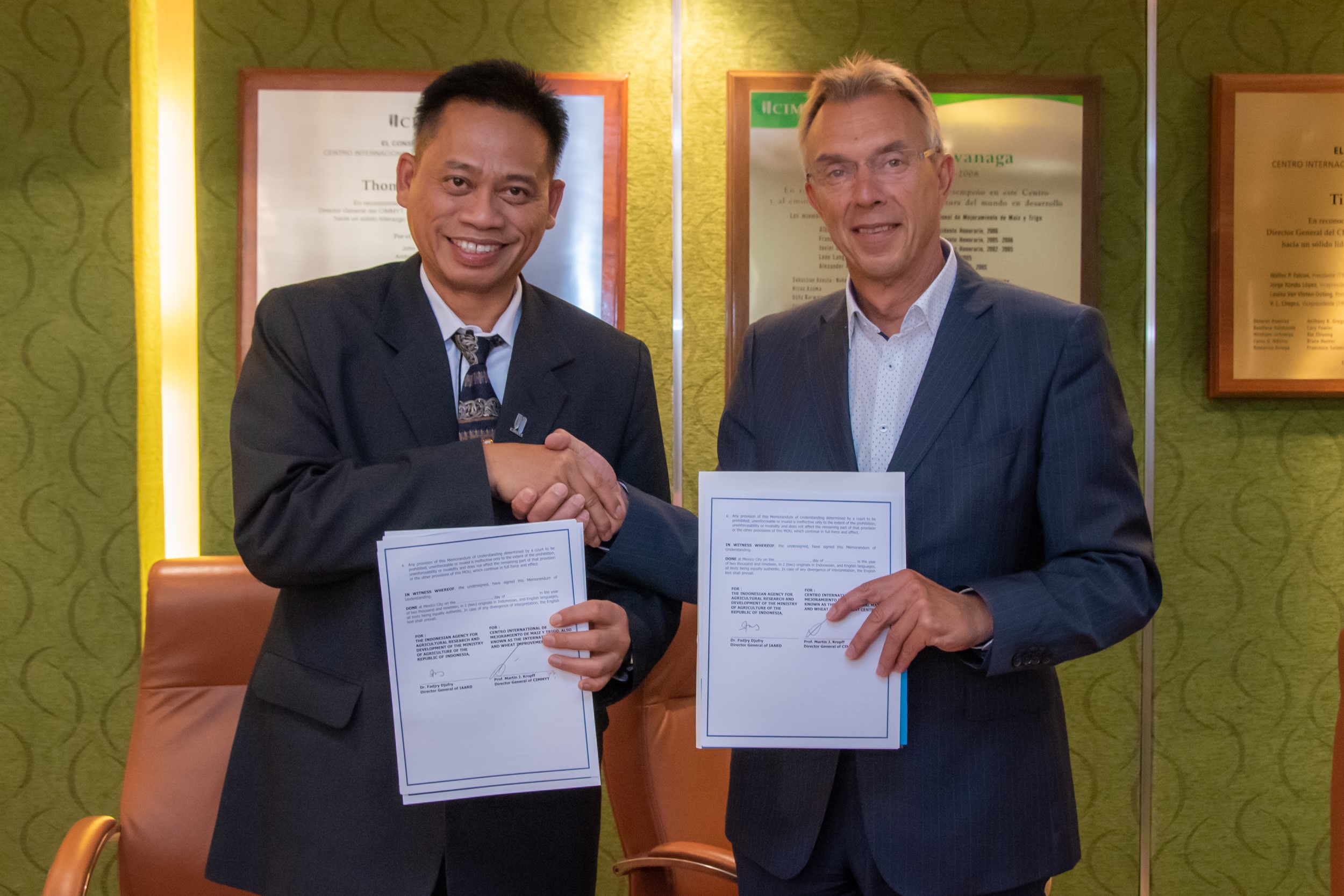
Given growing demand for maize and wheat in Myanmar and the increasing challenges to produce both crops, officials of the Myanmar Ministry of Agriculture and Irrigation’s (MOAI) Department of Agricultural Research (DAR) and CIMMYT representatives met at DAR headquarters at Yezin during 24-27 January, to strengthen collaboration, with a focus on increasing farm productivity and training a new generation of Myanmar scientists.
Maize area, output and demand are growing with increased use of the grain in poultry and livestock feeds. Nine-tenths of the 450,000-hectare (ha) national maize area is rain-fed and grown with few inputs. It suffers from erratic precipitation among other things. Nearly one-third is sown to hybrid seed imported from Thailand. Small- and medium-scale local seed producers need stimulation and support.
Wheat is important for subsistence farmers in the eastern hills but also to meet the rising demand of a growing population with more urban inhabitants. National consumption yearly exceeds 0.5 million tons, only 0.18 million of which is produced in Myanmar (the rest is imported from Australia). Yields are low due to lack of inputs or new seed varieties. Farmers particularly need heat tolerant, rust resistant wheat varieties and resource-conserving cropping technologies.

CIMMYT germplasm and other support are crucial for both crops in the country, but interactions have grown less frequent. The last Myanmar maize researcher to participate in training courses in Mexico came in 1999; the last wheat trainee, in 2002.
Participating in discussions were Dr. Tin Htut, director general, MOAI Department of Agricultural Planning, and DAR senior staff including Dr. Ye Tint Tun, DAR director general and U. Thant Lwin Oo, director for Maize & Other Cereals, Oil Seeds and Legumes.
CIMMYT was represented by Thomas A. Lumpkin, director general; Etienne Duveiller, regional representative for Asia; and administrative assistant Fabiola Meza. In addition to taking part in high-level discussions, they visited Dr. Win Win New, Director of the Aung Ban Agricultural Research Farm and Maize Breeder who conducts maize and wheat trials in southern Shan State and accompanied the team for field tours.

These interactions grew out of visits in 2014 to Myanmar by Duveiller and Dan Jeffers, a CIMMYT maize breeder based in Yunnan, China.
Opportunities to address Myanmar’s concerns include regional collaboration with CIMMYT maize research in Yunnan and Hyderabad and training at BISA farms in India, for conservation agriculture and small-scale mechanization. CIMMYT and DAR are developing an agreement to facilitate collaboration.

 Capacity development
Capacity development 

